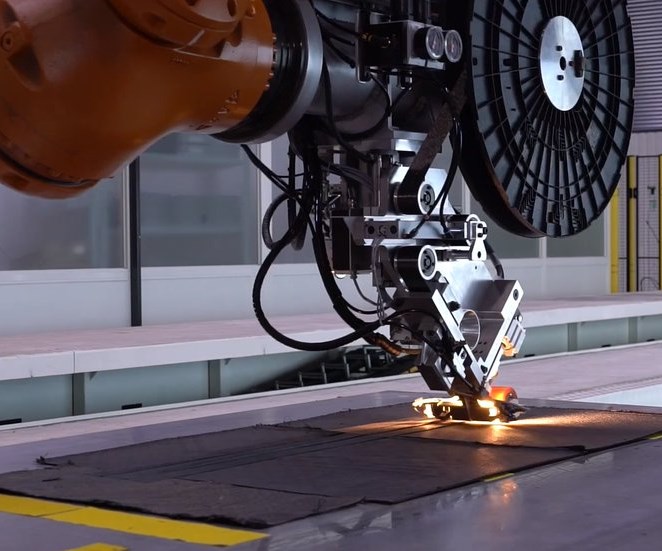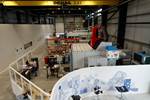IRT Jules Verne, Airbus and Fives launch MADRAS automated textile deposition line for WING project
Goal is full-scale testing of large, complex shape preforms at 5-6 times faster speeds for future aircraft.

The (IRT, Bouguenais, France) has inaugurated the MADRAS automated production line for production of composite textile preforms at rates 5-6 times faster than existing technologies. The 18-meter-long pilot line, installed at the (Nantes, France), has been developed in a French national collaboration with Airbus (Toulouse), Fives (Paris) and Loiretech Machining (Bouguenais). It marks a key step in this consortium’s WING project, launched in April 2017.
With a budget of 5.6 million euros, WING aims to assess the ability of textile technology to meet the high production rates for large composite structures with complex geometry for future aircraft. Research areas include preform architecture, tooling concepts and automated production lines. The challenge is to produce such parts at a cost compatible with the economic constraints of the industry.
MADRAS line
The MADRAS pilot line is divided into three robotic stations dedicated to draping, fast preforming and fiber placement. The goal is to eventually reach a deposit rate of 150 kilograms/hour or 300 millimeters/second, and to prove the technical viability of this solution by a series of full-scale tests.
The automated machines developed by Fives must allow fiber reinforcement to be deposited at four times the width and thickness versus current equipment. Loiretech, for its part, has developed specific tools that drastically reduce preforming cycle times. Goals include not only increased production rates for aerospace and industrial sectors, but also reduced production waste, leading to reduced cost and a much improved environmental footprint across industries.
"This technology will interest all industrial sectors who work on small and large parts: traditional and renewable energy, but also the transportation industry overall, whether aerospace, automotive or shipbuilding," explained Marie Weiss, IRT Jules Verne project manager.
For more details, see by Alexandre Couto at industri-techno.com.
Related Content
-
Co-molding SMC with braided glass fiber demonstrates truck bed potential
Prepreg co-molding compound by IDI Composites International and A&P Technology enables new geometries and levels of strength and resiliency for automotive, mobility.
-
Infinite Composites: Type V tanks for space, hydrogen, automotive and more
After a decade of proving its linerless, weight-saving composite tanks with NASA and more than 30 aerospace companies, this CryoSphere pioneer is scaling for growth in commercial space and sustainable transportation on Earth.
-
JEC World 2024 highlights: Glass fiber recycling, biocomposites and more
CW technical editor Hannah Mason discusses trends seen at this year’s JEC World trade show, including sustainability-focused technologies and commitments, the Paris Olympics amongst other topics.






